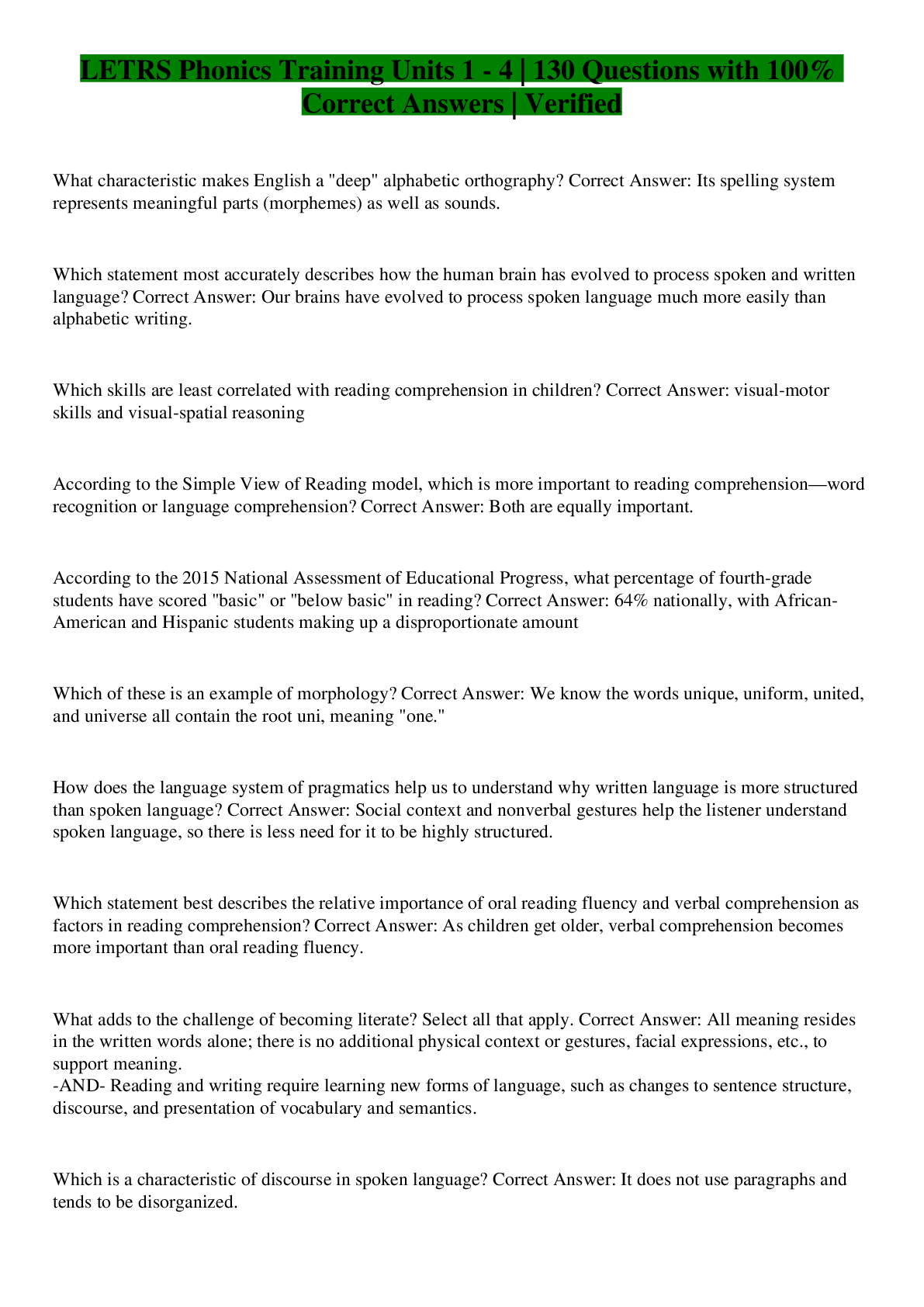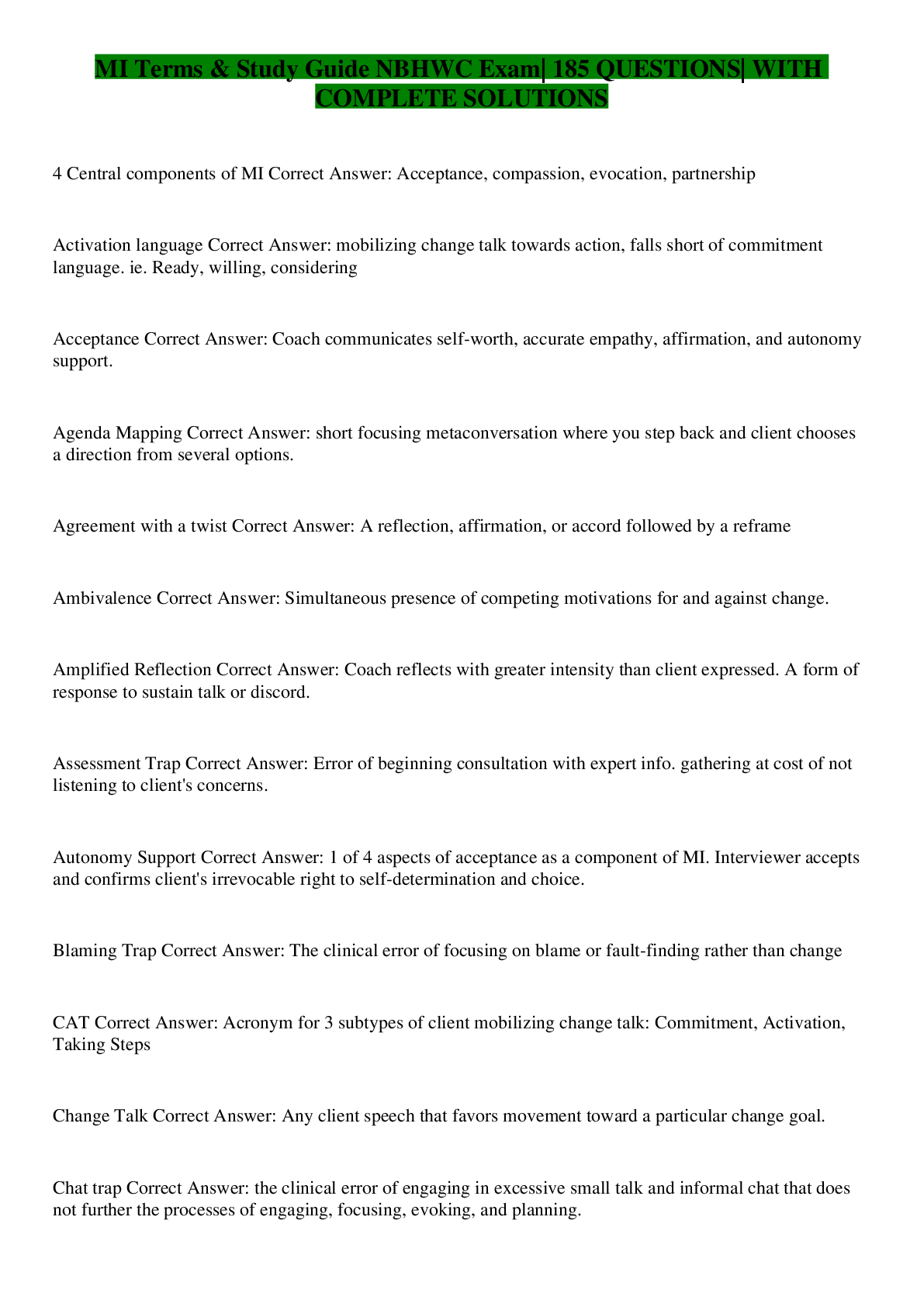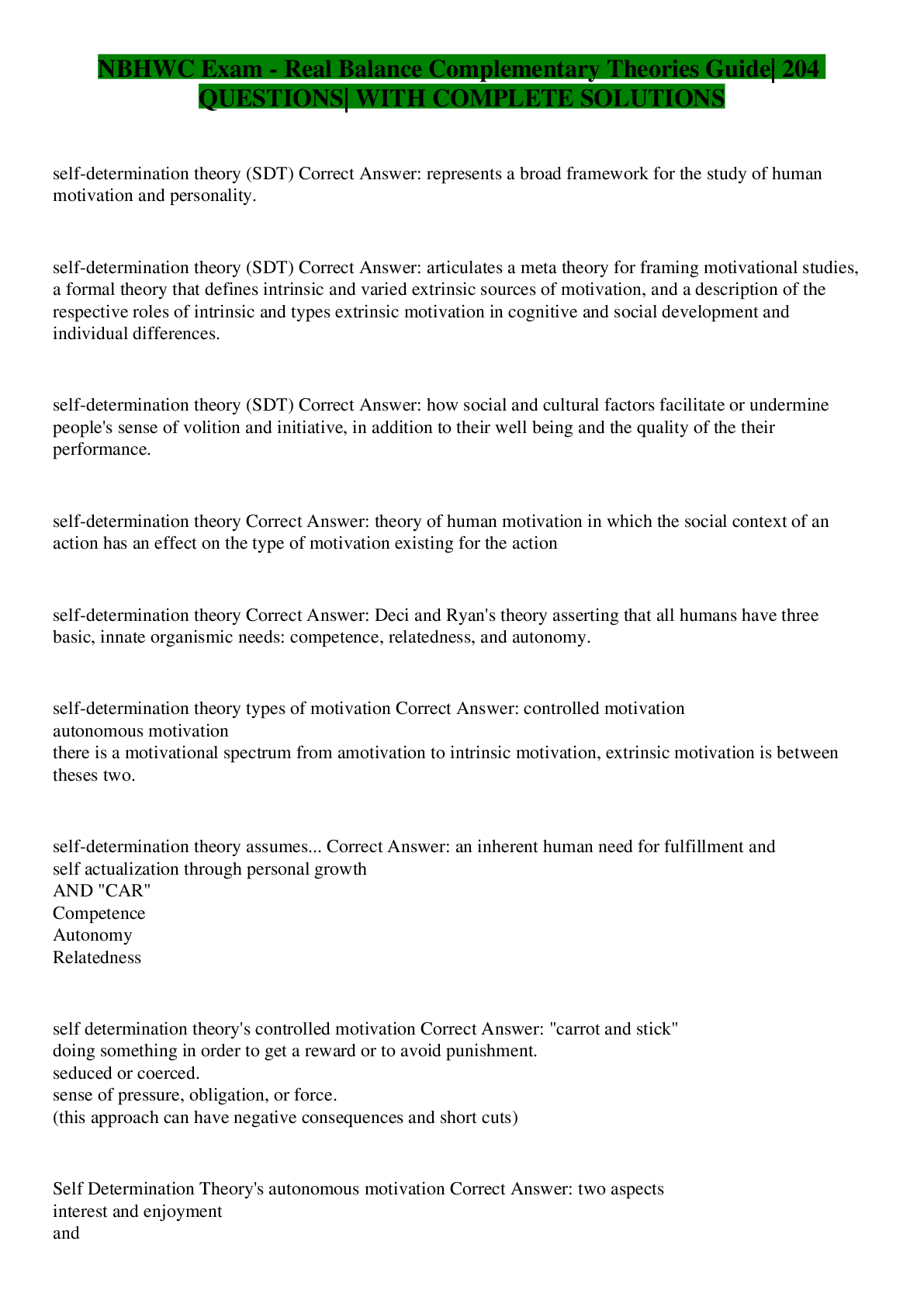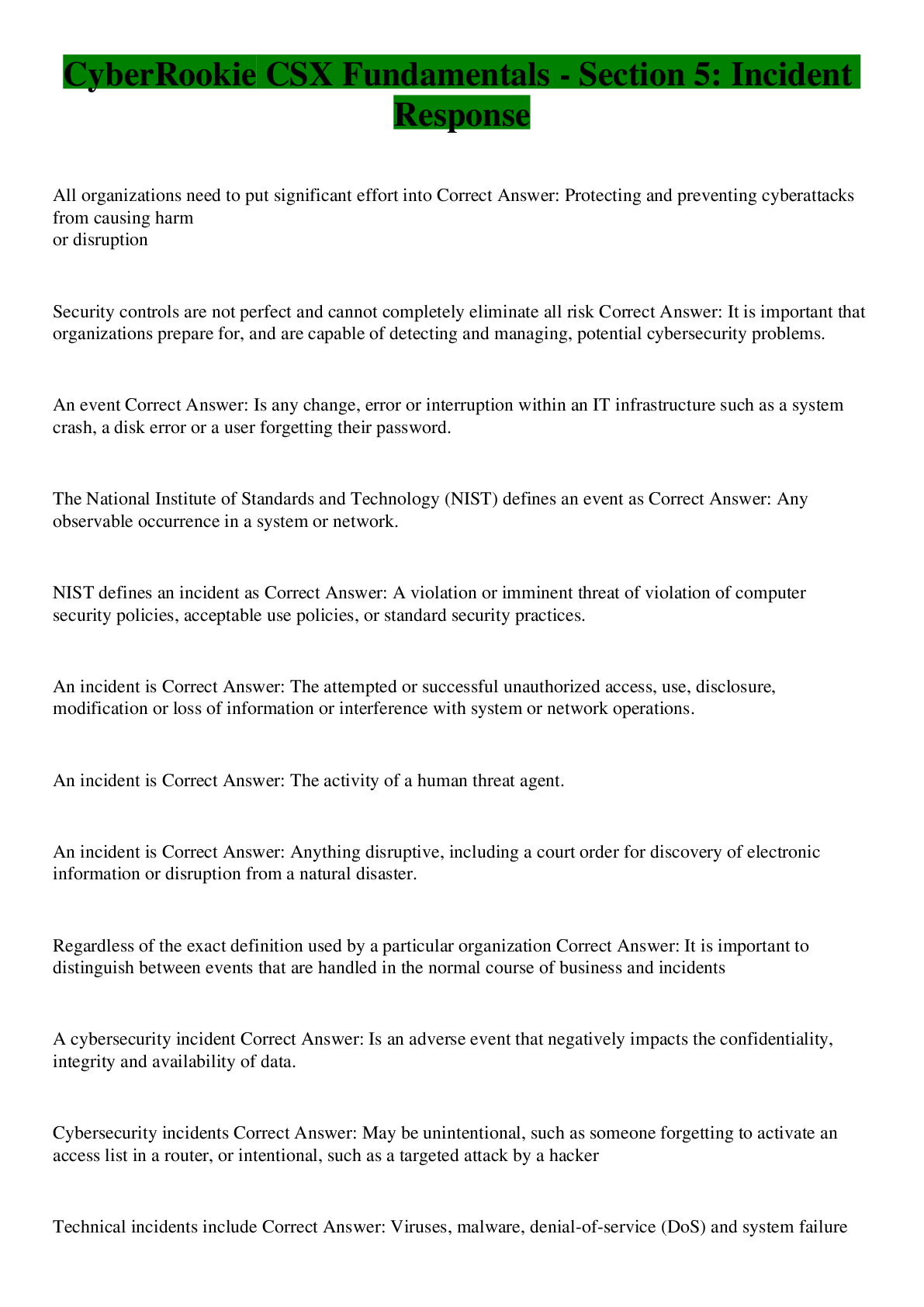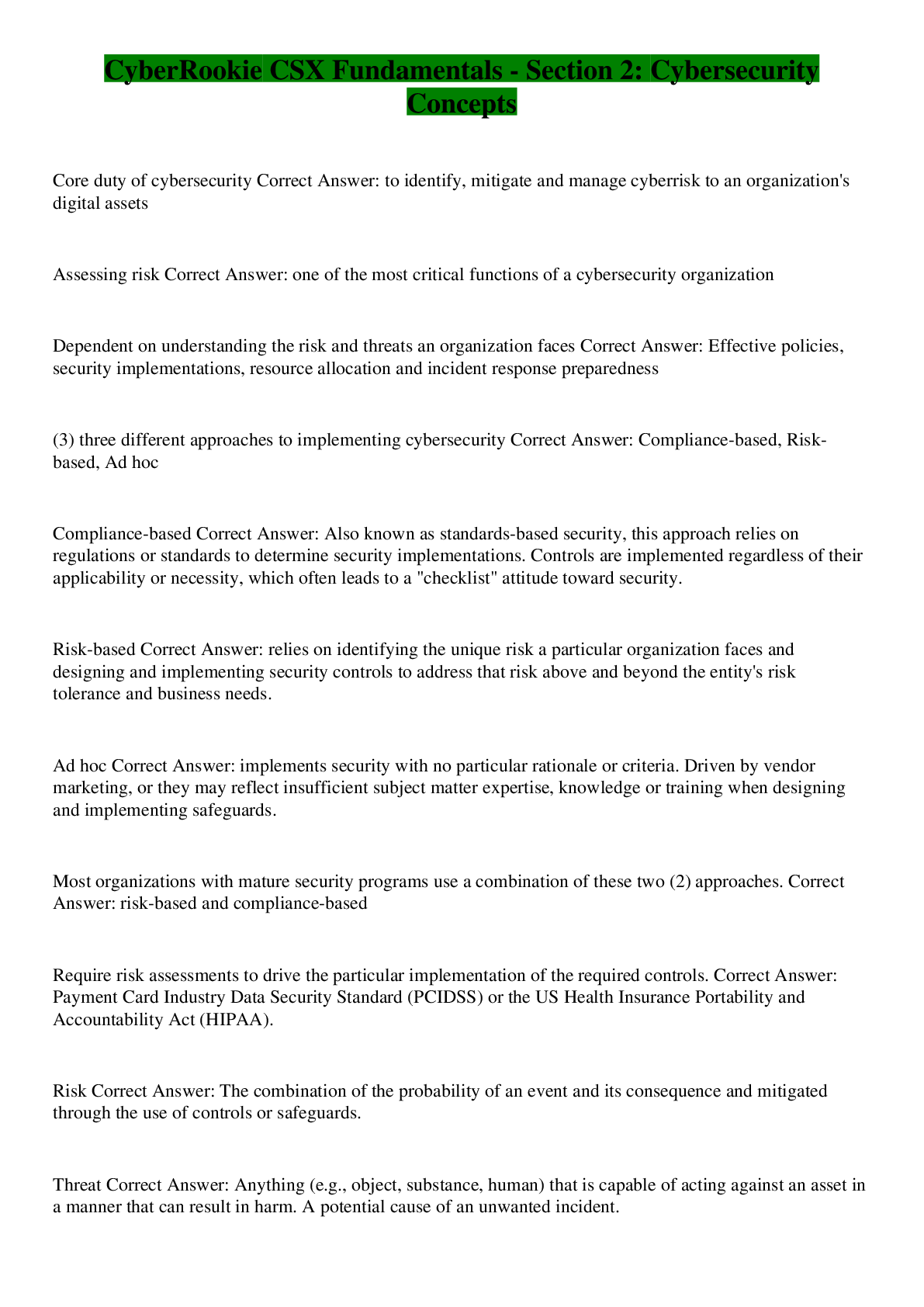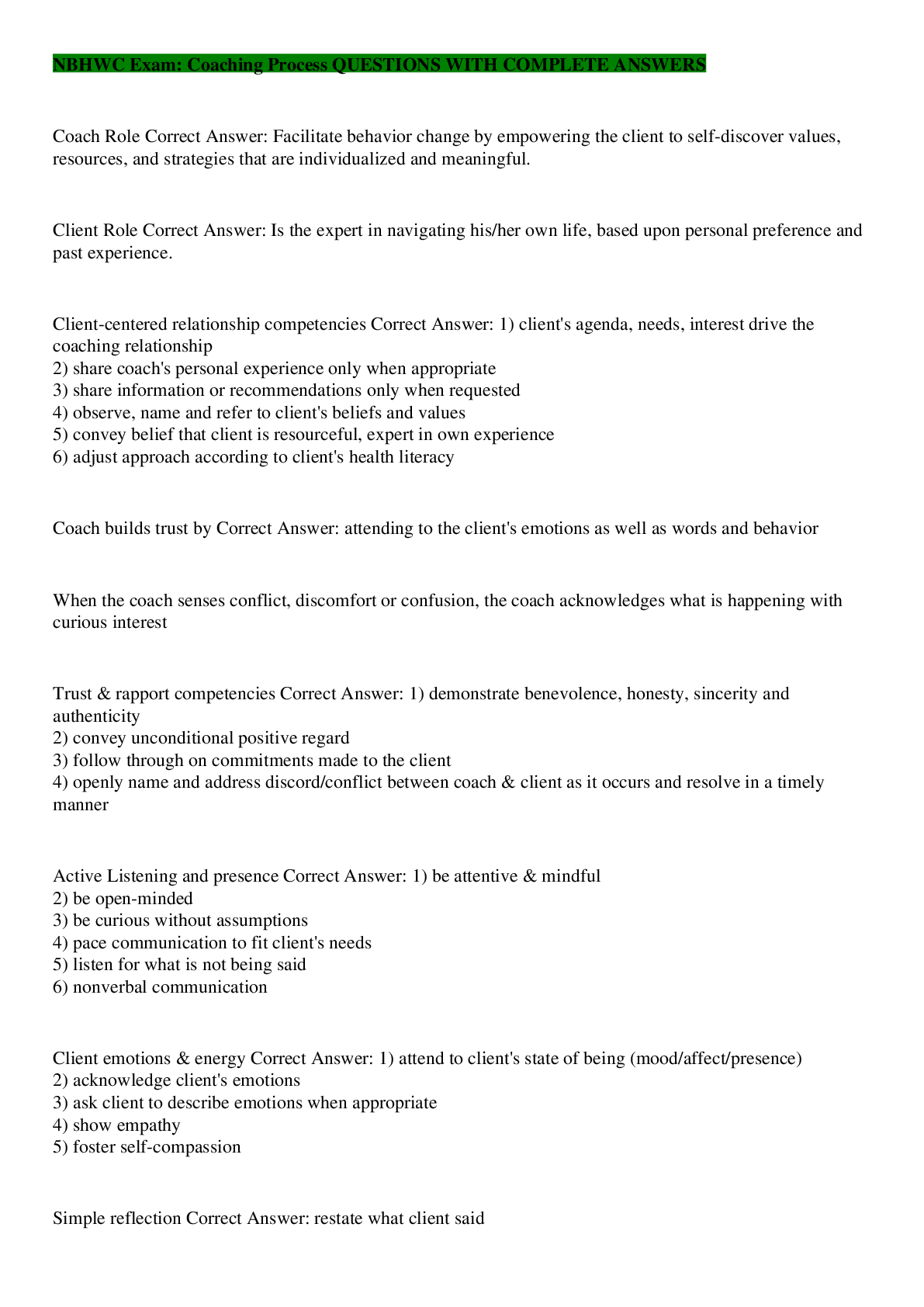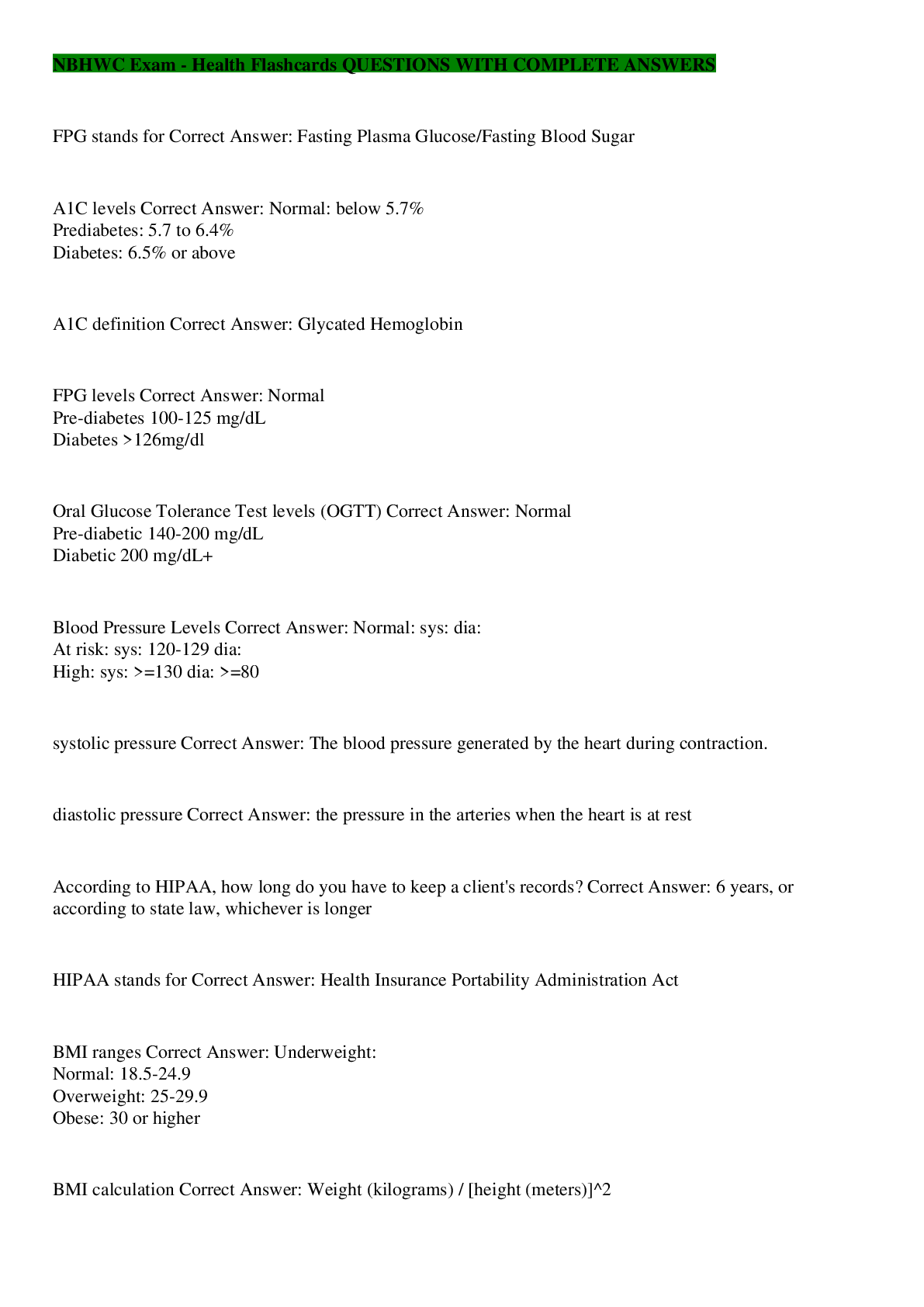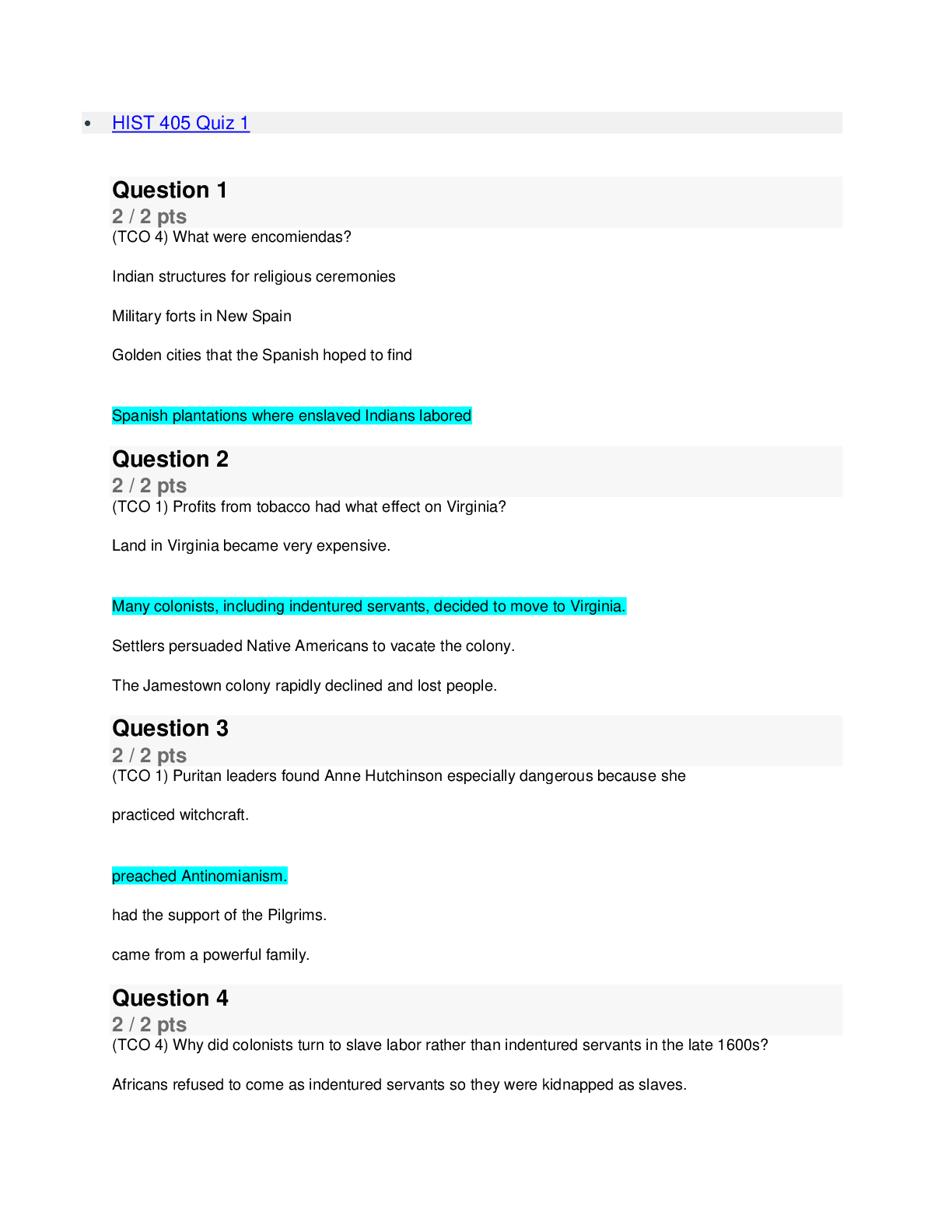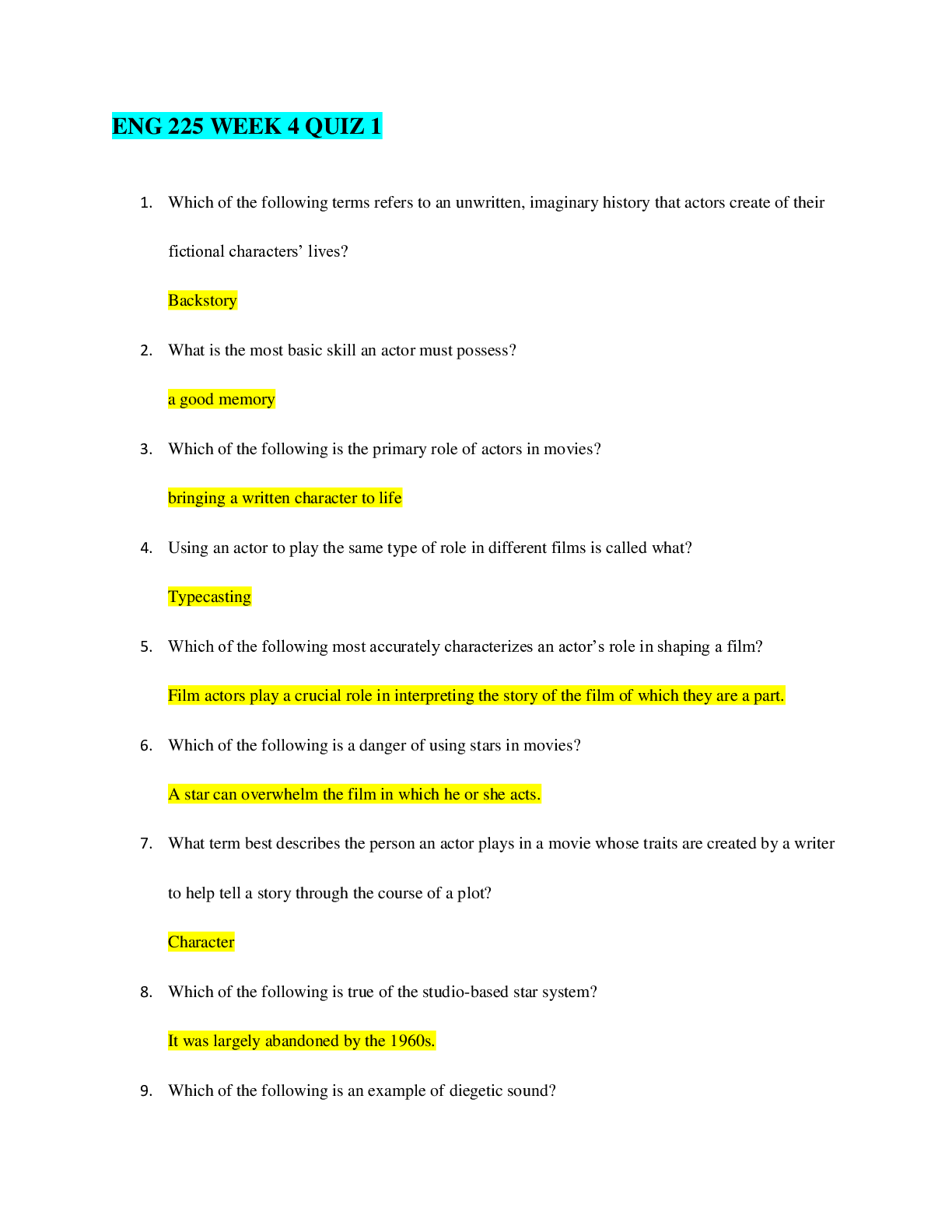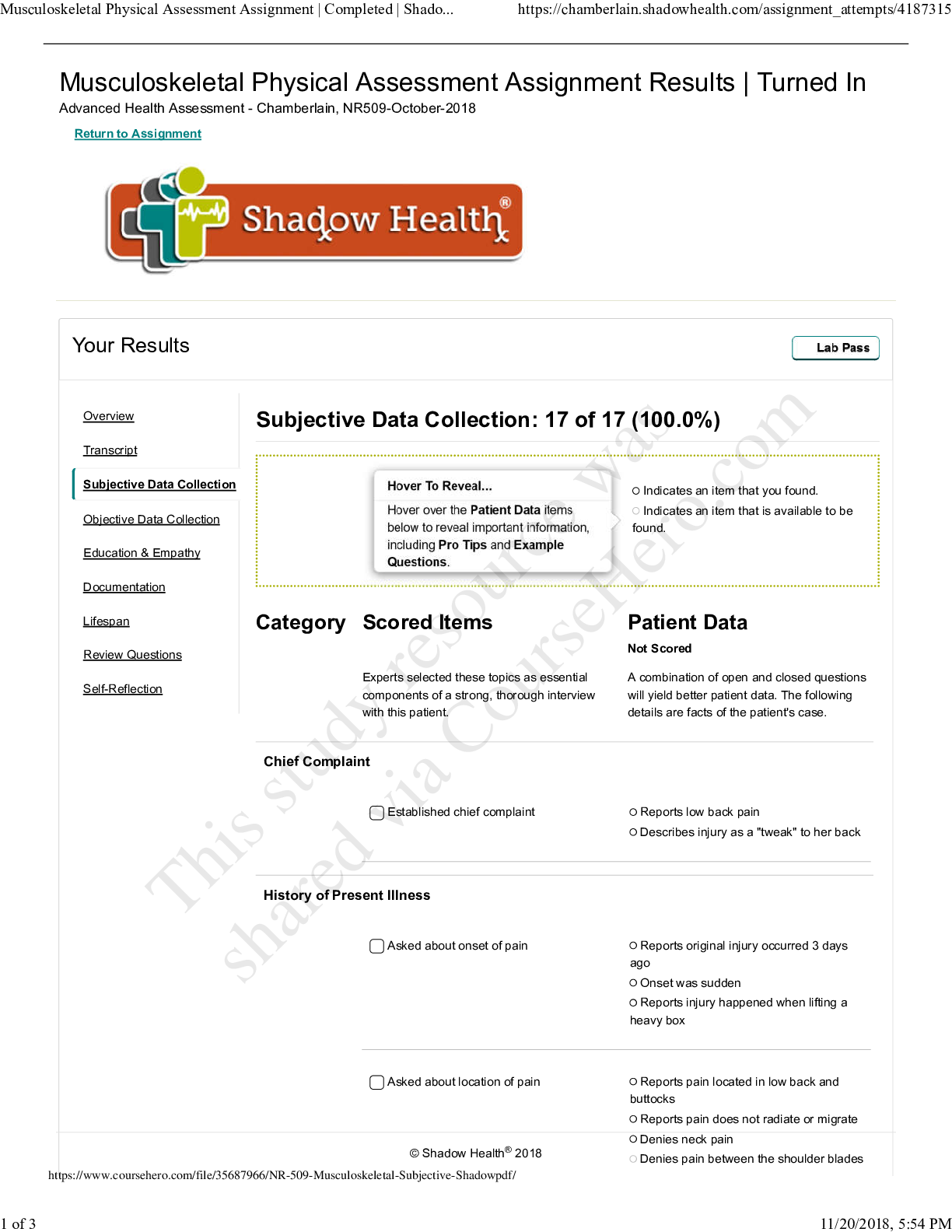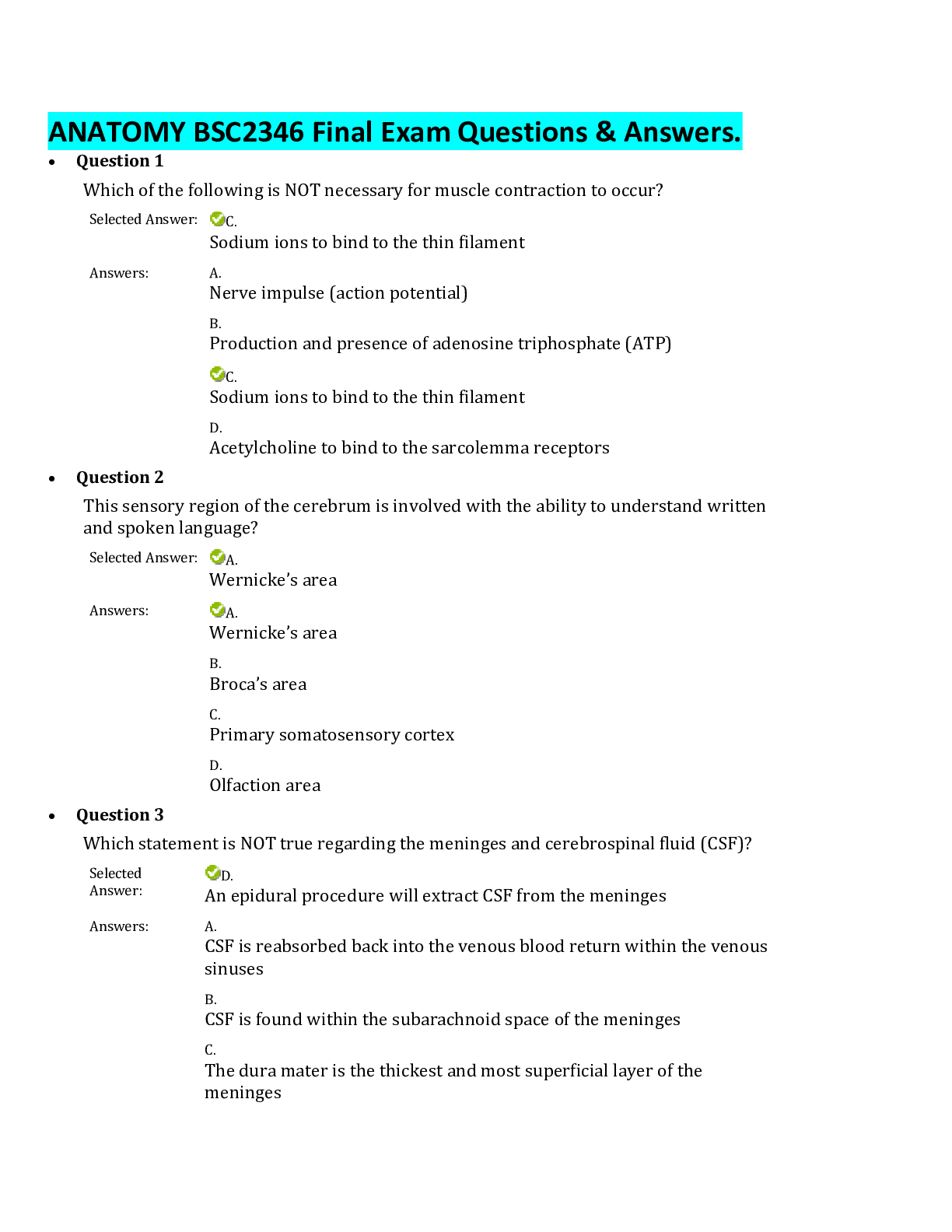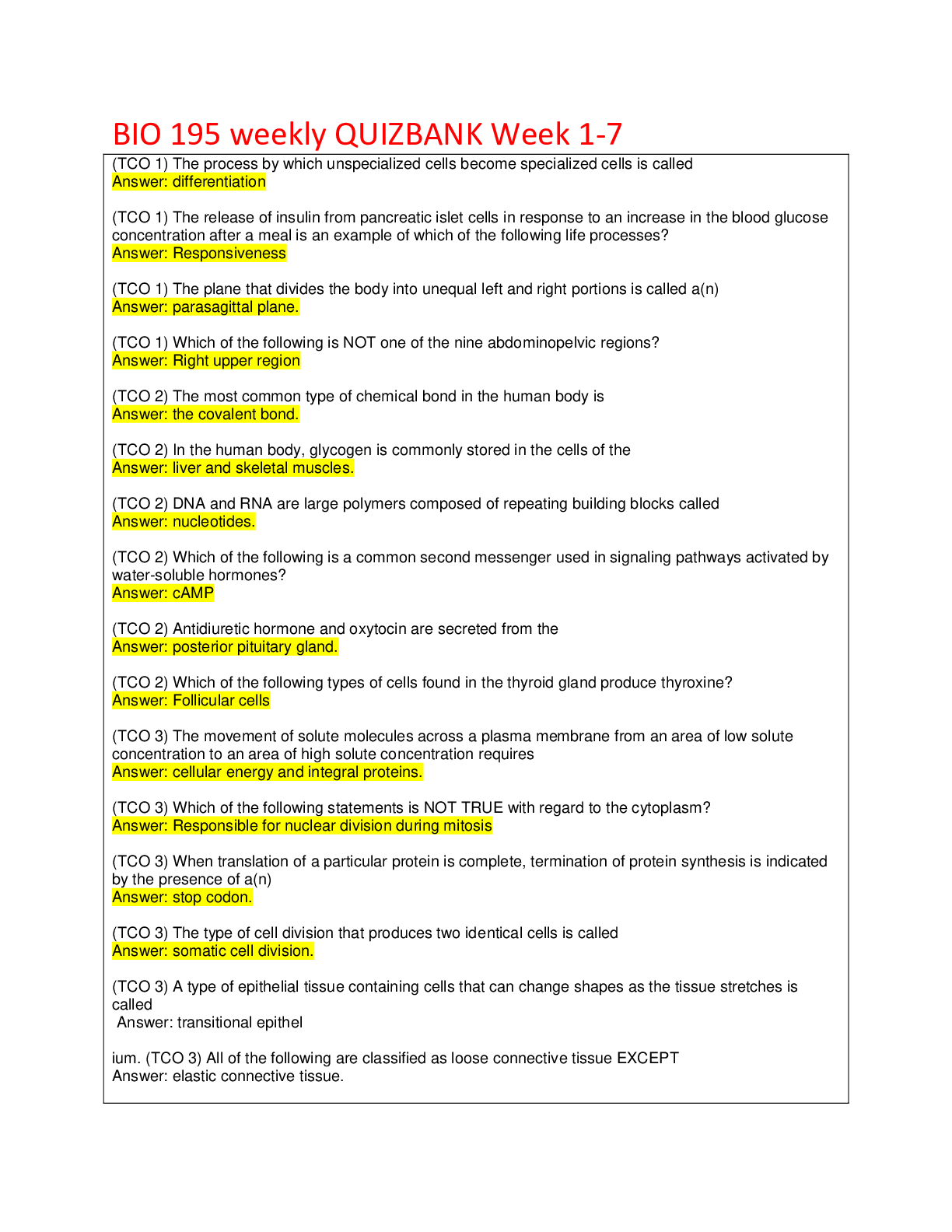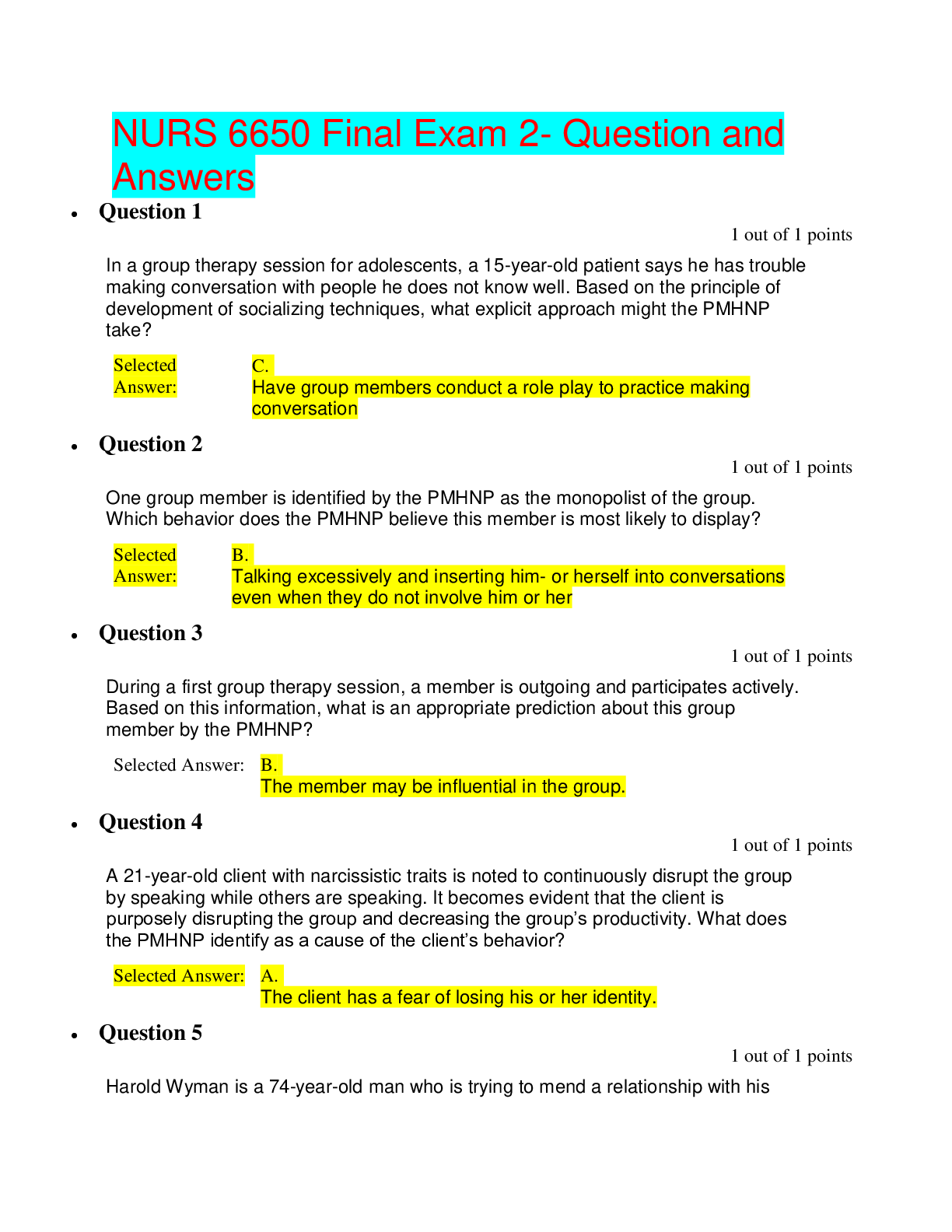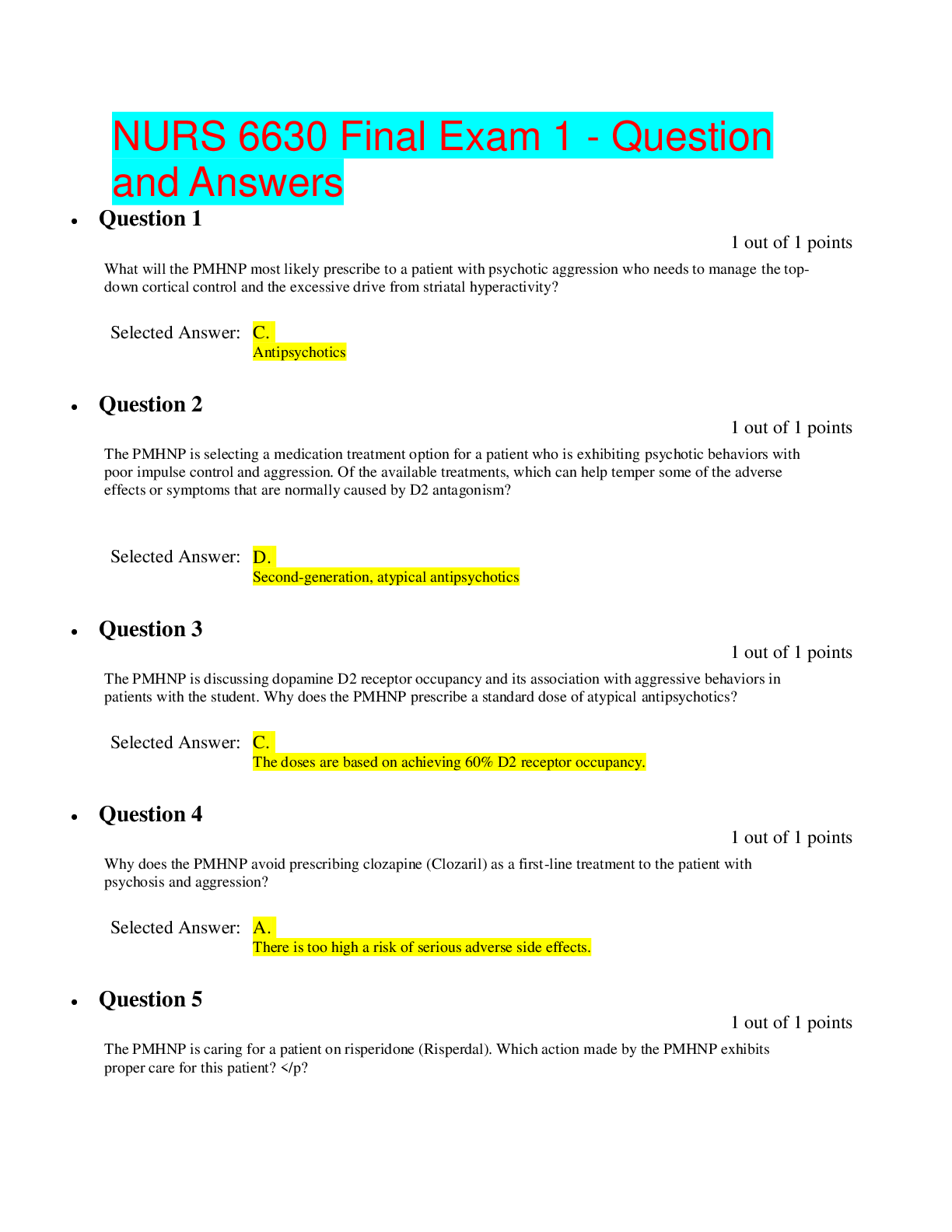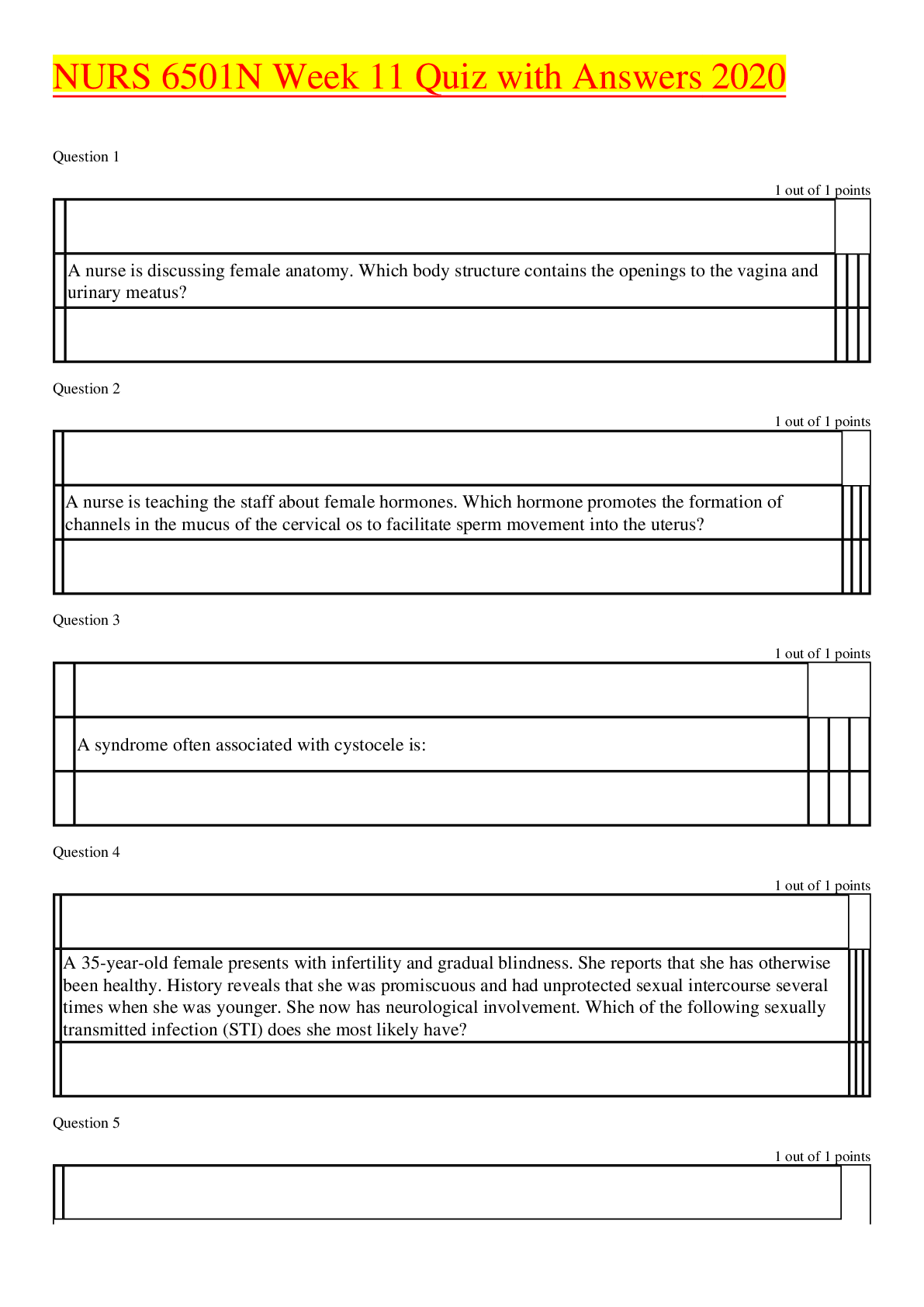Health Care > EXAM > TNCC - Trauma Nursing Core Course QUESTIONS AND ANSWERS 100% CORRECT (All)
TNCC - Trauma Nursing Core Course QUESTIONS AND ANSWERS 100% CORRECT
Document Content and Description Below
TNCC - Trauma Nursing Core Course Initial Assessment Correct Answer: 1. Preparation and Triage 2. Primary Survey 3. Reevaluation 4. Secondary Survey 5. Reevaluation Adjuncts 6. Reevaluation a... nd Post Resuscitation Care 7. Definitive Care or Transport A (Primary Survey) Correct Answer: Airway and alertness with simultaneous cervical spinal stabilization. Alertness Assessment Correct Answer: A-Alert V-Verbal P-Painful U-Unresponsive Airway Assessment Correct Answer: Inspect: tongue obstruction, loose/missing teeth, foreign objects, blood, vomitus, secretions, edema, burns or evidence of inhalation injury Auscultate: listen for obstructive airway sounds (ie. snoring, gurgling, stridor) Palpate: palpate for possible occlusive maxillofacial bony deformity, subcutaneous emphysema Airway Interventions: Correct Answer: Suction Remove foreign body if noted Jaw thrust maneuver (maintain cspine) Nasopharyngeal airway (can be conscious) Oropharyngeal airway (no gag) Consider definitive airway A (AVPU) Correct Answer: Alert. Will be able to maintain airway once clear. V (AVPU) Correct Answer: Verbal. Needs verbal stimuli to respond. (Airway adjunct may be needed to prevent tongue obstruction) P (AVPU) Correct Answer: Painful. Responds only to painful stimuli. (Airway adjunct may be needed while determining need for intubation) U (AVPU) Correct Answer: Unresponsive. Does not respond to any stimuli. B (Primary Survey) Correct Answer: Breathing and Ventilation Breathing and Ventilation Assessment Correct Answer: Inspect: spontaneous breathing, symmetrical rise and fall, depth/pattern/rate of respirations, accessory muscle use, diaphragmatic breathing, skin color (normal, pale, flushed, cyanotic), contusions/abrasions/deformities (signs of underlying injury), open pneumothoraces (sucking chest wound), JVD, tracheal position, signs of inhalation injury Auscultate: presence, absence and equality of breath sounds at 2nd intercostal space midclavicular line and bases at the fifth intercostal space anterior axillary line Palpate: bony structures, possible rib fractures, SQ emphysema, soft tissue injury, JV pulsations at suprasternal notch or supraclavicular area Life-threatening pulmonary injuries requiring immediate intervention: open pneumothorax, tension pneumothorax, flail chest, hemothorax. Breathing and Ventilation Intervention Correct Answer: Breathing absent: jaw-thrust maneuver, oral airway adjunct, assist ventilation with bag-mask device, prepare for definitive airway Breathing present: NRB. Determine if ventilation effective: etCO2 35-45, SpO2 94% or higher. If ineffective: assist with bag-mask and determine need for definitive airway C (Primary Survey) Correct Answer: Circulation and Control of Hemorrhage Circulation and Control of Hemorrhage Assessment Correct Answer: Inspect: Uncontrolled external bleeding, skin color Auscultate: Muffled heart sounds - may indicate pericardial tamponade Palpate: carotid and/or femoral pulses for rate, rhythm, strength Circulation and Control of Hemorrhage Interventions Correct Answer: Control and treat external bleeding: apply direct pressure, elevate bleeding extremity, apply pressure over arterial sites, consider use of a tourniquet. 2 large bore IVs, if unable consider IO, obtain labs and crossmatch. Initiate IVF of warmed isotonic crystalloid solution. Consider blood products after 2L. **Large volumes of fluid lead to dilution coagulopathy which worsens metabolic acidosis and may cause hypothermia. Component therapy, including administering RBC, plasma and platelets is a balanced approach so that O2 delivery is optimized, acidosis corrected and coagulopathy prevented. D (Primary Survey) Correct Answer: Disability (Neurologic Status) Disability Assessment Correct Answer: Assess GCS on arrival and repeat per policy. Assess pupils for equality, shape and reactivity (PERRL) Disability interventions Correct Answer: Evaluate for need for CT. Assume AMS to be the result of CNS injury until proven otherwise. Consider ABGs - AMS may be indicator of decreased cerebral perfusion, hypoventilation or acid-base imbalance. Consider bedside glucose. GCS Correct Answer: GCS EYES 1: Does not open eyes 2: Opens eyes in response to pain 3: Opens eyes in response to voice 4: Opens eyes spontaneously VERBAL 1. Makes no sounds 2. Makes sounds 3. Words 4. Confused, disoriented 5. Oriented, converses normally MOTOR 1. Makes no movements 2. Extension to painful stimuli (decerebrate) 3. Abnormal flexion to painful stimuli (decorticate) 4. Withdrawal to painful stimuli 5. Localizes painful stimuli 6. Obeys commands E (Primary Survey) Correct Answer: Exposure and Environmental Control Exposure and Environmental Control Correct Answer: Carefully and completely undress the patient. Inspect for uncontrolled bleeding and note any obvious injuries. Prevent heat loss. Hypothermia combined with hypotension and acidosis is a potentially lethal combination in the injured patient. Consider: warm blankets, keep ambient temperature warm, warm IVF, forced air warmers, radiant warming lights. F (Primary Survey) Correct Answer: Full Set of VS & [Show More]
Last updated: 1 year ago
Preview 1 out of 8 pages

Buy this document to get the full access instantly
Instant Download Access after purchase
Add to cartInstant download
We Accept:

Reviews( 0 )
$10.00
Document information
Connected school, study & course
About the document
Uploaded On
Sep 14, 2022
Number of pages
8
Written in
Additional information
This document has been written for:
Uploaded
Sep 14, 2022
Downloads
0
Views
56


